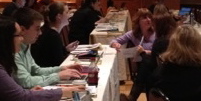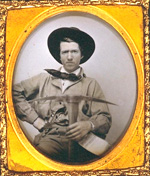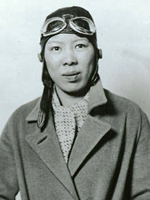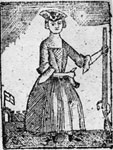For those of you who couldn’t make it to Chicago on January 7 for our workshop, “Teaching the Past in a Digital World: New Perspectives for History Education,” at the American Historical Association (AHA) Annual Meeting, you not only missed the balmy 50 degree temperatures (not bad for Chicago in January!), but also quite a few great resources worth sharing. Here’s a recap:
After a welcome by Anne Hyde of Colorado College, I provided a brief overview of Teachinghistory.org. With about half the audience already familiar with the site, I was able to get everyone up to speed and highlight a few new features, including the newly unveiled Favorites tool, as well as the new Spotlight Pages. Responding to a commonly asked question about world history, I highlighted the many teaching materials and best practices that can apply to all historical topics, whether you teach the American or the French Revolution.
From adrenaline to Vimeo, we covered a lot of ground in Chicago.
Fitting for Chicago, Dr. Daniel Graff from the University of Notre Dame introduced ideas and resources to help teachers integrate labor history into their teaching. He provided a packet of primary sources that participants analyzed in small groups and then discussed as a whole group. The workshop helped me see new classroom connections for bringing labor history into discussions about slavery, women’s history, and the civil rights movement.
My colleague, Rwany Sibaja, presented an interactive workshop with handouts on teaching American history with digital tools. He introduced the participants to Vimeo, Prezi, and Animoto among others. I always learn new things from my Teachinghistory.org colleagues (Rwany introduced me to Prezi last year) and you can check out some of his write-ups on various tools in our Tech for Teachers section.
Next up, Paul Kolimas of Homewood Flossmoor High School moderated a session with fellow Homewood Flossmoor High School teachers Jeff Treppa and John Schmidt. They offered a presentation on a “new school” approach to the classic research paper. It was interesting to see how their techniques related back to Teachinghistory.org’s emphasis on historical thinking skills. The audience had lots of questions, so they definitely hit on a popular topic.
Molly Myers of Lindblom Math and Science Academy then turned our attention back to digital tools, focusing her talk on how she uses technology for the 3 c’s: collaboration, communication, and community building. Her presentation helped me see a lot of new possibilities and I particularly loved hearing how Molly turned to Twitter to get input from teachers on #SSChat about how they use digital tools for her presentation.
We ended the workshop with an inspiring talk by Patricia Nelson Limerick, vice-president of the AHA’s Teaching Division and professor at the University of Colorado, Boulder. She titled her talk, “Facing Down Fear: Innovation, Experimentation, and Adrenaline in the Teaching of History.” The talk lived up to the title. She spoke about the importance of trying new things, even things you might fear such as using new technology. She also talked about the importance of personal connections in the classroom (and in life) and raised the question of whether digital tools enhance or distract us from these personal links. She graciously agreed to write up her talk for Teachinghistory.org, so look for her post in the coming weeks.
So from adrenaline to Vimeo, we covered a lot of ground in Chicago. Our next stop? Kansas City for the National Council for History Education conference, March 22-24. Hope to see you there!




